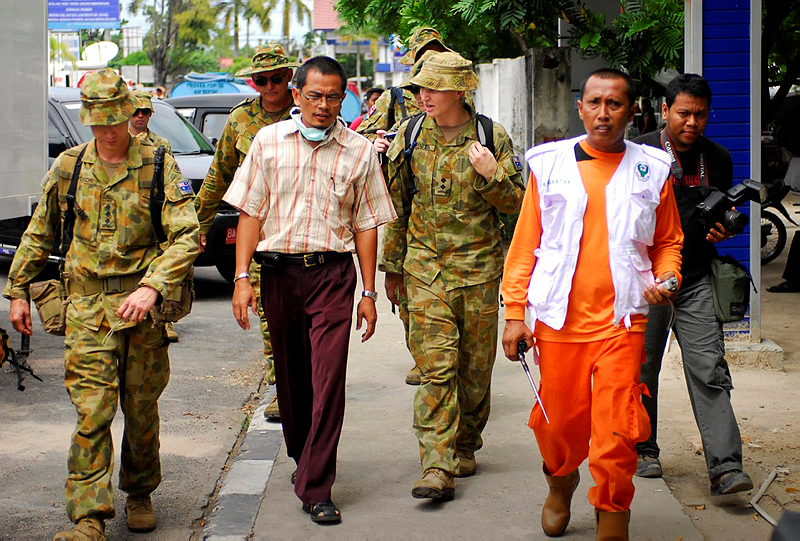ADF: more than just warfighters?
 In the 2009 Defence White Paper, the Government expected the ADF to carry out a number of tasks. In addition to its core war fighting roles, there were a number of secondary tasks, including missions that involve an overlap of responsibility with other government agencies. In this category were a range of activities; protecting our offshore estate; contributing intelligence, surveillance, and reconnaissance capabilities for border protection; assisting civil authorities protect major events and deal with counterproliferation; supporting emergency response efforts for natural disasters within Australia and our neighbourhood; and providing marine search and rescue.
In the 2009 Defence White Paper, the Government expected the ADF to carry out a number of tasks. In addition to its core war fighting roles, there were a number of secondary tasks, including missions that involve an overlap of responsibility with other government agencies. In this category were a range of activities; protecting our offshore estate; contributing intelligence, surveillance, and reconnaissance capabilities for border protection; assisting civil authorities protect major events and deal with counterproliferation; supporting emergency response efforts for natural disasters within Australia and our neighbourhood; and providing marine search and rescue.
The rationale was that the ADF possesses a range of specialised capabilities on a scale and of a kind available from no other Australian agency and that humanitarian assistance and disaster relief operations need to be closely integrated with efforts by civilian agencies.
Sometimes the ADF would be expected to be the lead agency—in circumstances where there might be a need to demonstrate a willingness and capacity to employ military force, or where its substantial level of capacity is required in circumstances that are beyond that of other agencies. In other cases, the ADF will take a more secondary role. The evacuation of Australian nationals from foreign trouble spots might be one such case. Read more